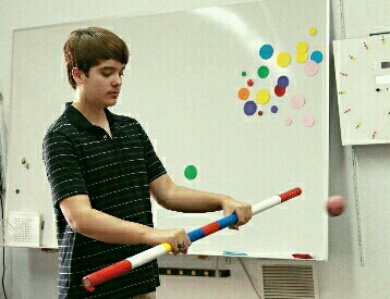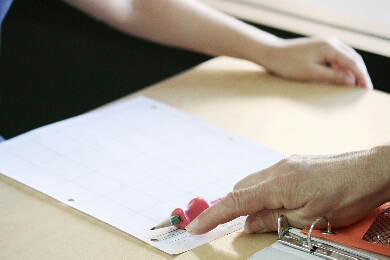
Many people with 20/20 eye sight suffer from visual dysfunctions that can impact reading and learning. Some of the behavioral symptoms we see in school age kids are the result of poor visual skills. In fact the check list for ADD and ADHD look very similar to the visual dysfunction checklist.
Majority of learning involves the use of vision. Imagine a child that cannot team his eyes together to see single and clear, how is he supposed to concentrate on reading and writing. And what about the child that has trouble changing his focus from seeing distance to near, how can he copy from the board and find his place back on the page. A child after a car accident or brain injury can appear to be doing well, but he might very well experience symptoms such as sensitivity to light, trouble with tracking, and concentration issues that can severely impact his ability to learn.
These visual dysfunctions can be improved through lenses and vision therapy. Our doctors and vision therapists routinely help patients with reading and learning difficulties, amblyopia, strabismus, traumatic brain injury, post stroke, visual strain, focusing and eye teaming problems, and special needs.
1 in 4 children struggle with reading because of undiagnosed vision problems.
They lack adequate visual skills needed for close up work during reading, writing, and computer tasks. Often, we attribute children’s symptoms to problems such as ADHD or learning disabilities, when the source of their problems in the classroom is undiagnosed visual problems.
80% of learning takes place through vision
The whole brain is involved with vision and integrated with all other senses. Two thirds of our brain pathways is taken up by vision. A few of the visual skills that can impact learning includes eye tracking, focusing, eye teaming, depth perception, eye-hand-body coordination, visual memory, and visual form perception.
60% of students identified as learning disabled have undetected visual problems.Your child can only learn properly if he can move his eyes along the lines of a book efficiently, switch from far to near vision quickly and accurately, sustain clarity on targets at different distances such as copying from the board, team the eyes to see single when reading with minimal effort, integrate what they see and what they write, visually discriminate objects, and successfully perform some other visual tasks. If your child cannot do these visual tasks efficiently, a bright child can easily be mislabeled learning disabled.
Symptoms of poor visual performance
- Blurred Vision distance or near
- Rubs eyes frequently or squints
- Closes or covers one eye or holds things very close or far
- Able to read only for a short time
- Poor reading comprehension
- Frequent headaches or eye strain
- Poor or inconsistent handwriting
- Trouble learning right and left or reverses letters/numbers
- Difficulty changing focus far and near
- Uses finger to keep place and poor posture when reading or writing
- Trouble with basic math concepts or poor speller
- Dizziness or motion sickness
For more information, visit the following websites:
Optometric Extension Program Foundation www.oepf.org/
College of Optometrists in Vision Development (COVD)www.covd.org/
Parents Active for Vision Education (PAVE)pavevision.org/
To find an optometrist that understands vision and learning near you, visit:
Optometric Extension Program (OEPF) www.oepf.org/page/map
College of Optometrists in Vision Development (COVD)covd.site-ym.com/
For professional papers and research, visit:
Optometric Extension Program Reference Center (OEPF) www.oepf.org/page/professional-papers
© 2010, Author
